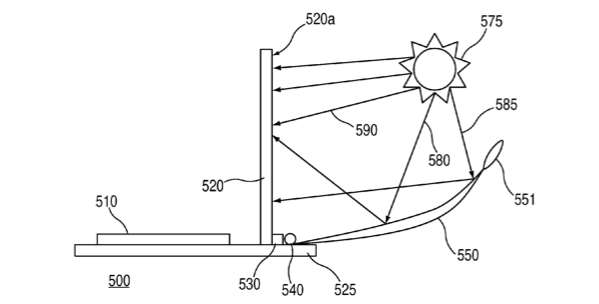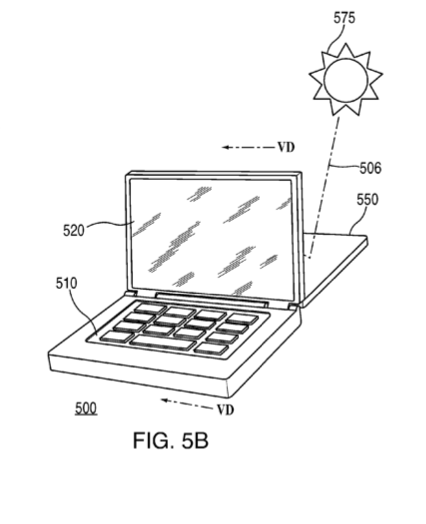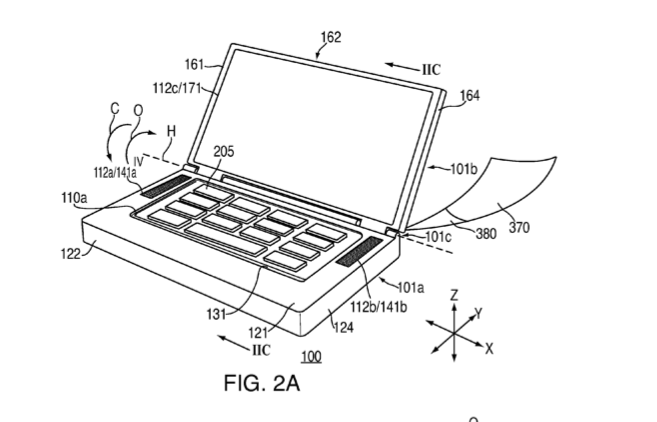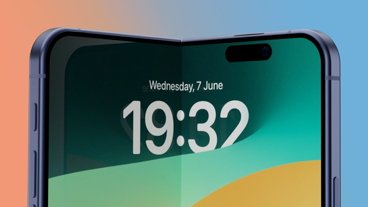The application revealed this week, entitled "External Light Illumination of Display Screens," notes that current LCD displays can be difficult to view when outdoors in direct sunlight. In addition, it said, it often takes high-powered components to properly light the display. The patent describes a way for a portable computer, like a MacBook, to collect external light to illuminate the computer screen.
One described method would employ a "light harness," which would serve as a collector of light that would then be displayed onto the screen. This could be done by having the harness reflect light toward the back of the display panel.
In addition to the sun, external light could come from a variety of sources, including an accessory light bulb that could be a part of the mobile computer. The application also mentions such a device could be used in a vehicle, with the screen illuminated by a light inside a car.
The system could also include internal LED light sources that could be used in conjunction with the external light source, if there is not enough light available to properly see the screen.
"The internal light sources may also increase the power consumption of the electronic device," the application reads. "Therefore, a manifold or other light harness may be used along one or more edges of the display screen in conjunction with or as an alternative to the internal light sources to provide illumination to the display screen by emitting light channeled from an external light source across the display screen."
One potential method would have the reflector behind the display screen, relaying light to the back of the panel to illuminate it for the user. Another method described in the application would allow the user to remove the reflector entirely, if the user were to position themselves and the back of the computer display towards the light source.
The technology would rely on a translucent surface, either removable or permanent, placed behind the computer display. The surface would either pass or harness external light, allowing the display to be illuminated. The surface could also be hardened to prevent damage to the display.
The patent application was filed with the U.S. Trademark & Patent Office on Sept. 19, 2008. The invention is credited to Peter H. Mahowald.
 Neil Hughes
Neil Hughes









-m.jpg)






 Charles Martin
Charles Martin
 Christine McKee
Christine McKee
 Wesley Hilliard
Wesley Hilliard
 Malcolm Owen
Malcolm Owen
 Andrew Orr
Andrew Orr
 William Gallagher
William Gallagher
 Sponsored Content
Sponsored Content








33 Comments
...Damn!
iLight.
Colour accurary?? As any photographer knows, the white balance of the sun is very different to that of artificial light, so a clever system of balancing colours would be required.
Hot spots? If the reflector is not set up correctly, it could produce hot spots which would ultimately damage the screen.
How many keys on the keyboard!?!
Phil
My Macbook already has this feature. But only in a small apple shaped spot in the middle
If it's a bright day and the sun is behind your MacBook, you can already see the sun shining through the Apple Logo on the screen. Not terribly useful, and very occasionally annoying.